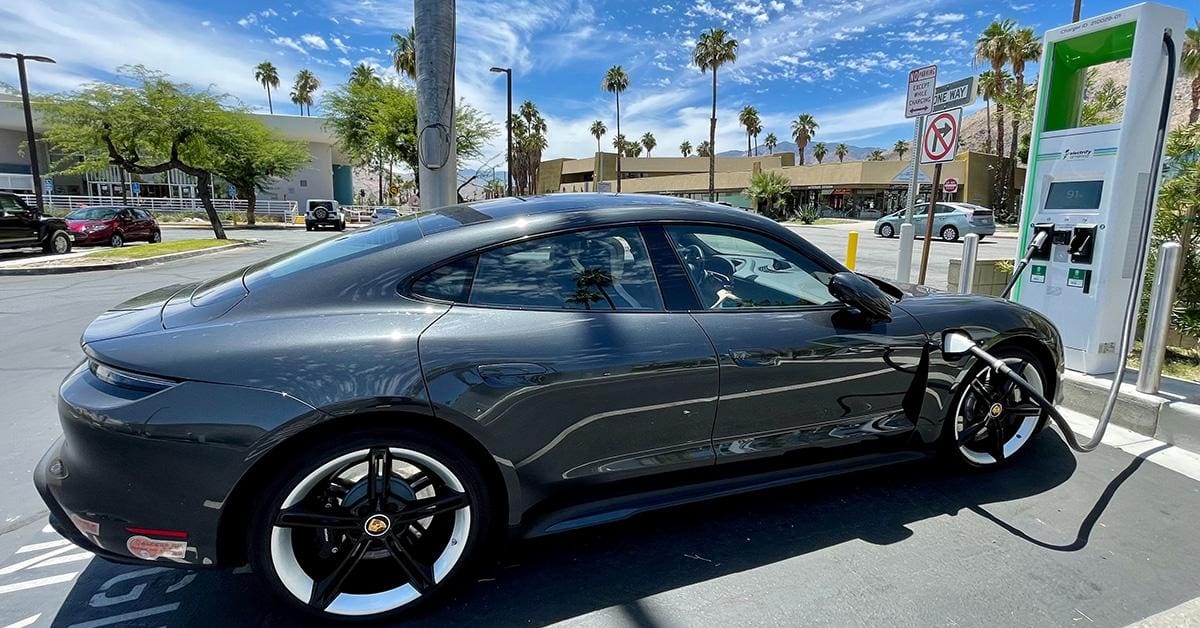Meeting ever-increasing demand for climate-friendly cars means addressing grid security

By 2030, electric vehicles are expected to account for about 40% of all car sales in the U.S. While that’s good news for sustainability efforts, this transition will tax critical infrastructure, including increasing the risk of cyber attacks on EV charging stations. IPKeys Cyber & Power Partners CEO Robert Nawy talks about what needs to be done now to ensure long-term security of the EV charging grid.
The world we live in is more highly interconnected than ever before. Smart gadgets, the Internet of Things, social media and more link people and business across the globe in ways that would have been considered the realm of science fiction just a few decades ago. Yet, for all the doors those connections open, they also create risks, as both friend and foe can walk through an unwatched door. Every industry is now a target of a potential cyberattack and must invest in robust security measures, but none are more targeted than critical components of our modern infrastructure.
Our electric grid is rapidly evolving to accommodate the ever-growing demand for cleaner and more sustainable energy sources. The importance of the electric grid has made it an increasingly inviting target for malicious entities, making cybersecurity a paramount concern. With the ambitious plan to rapidly deploy electric vehicles (EVs), the demand for more energy will significantly impact the grid. Addressing vulnerabilities and potential threats is essential to ensuring a secure and reliable energy supply.
Recent forecasts expect EV sales in the United States to reach 40% of total passenger car sales by 2030. The widespread adoption of EVs has led to a significant increase in the number of EV charging stations worldwide. These charging stations, while initiating progress towards a new era of green transportation, have also become attractive potential targets for cyberattacks. Ensuring the security of these infrastructures is critical to maintaining user safety, protecting data, and ensuring the reliability of the EV infrastructure.
Identifying threats and vulnerabilities
A comprehensive understanding of the potential vulnerabilities and access points in EV charging stations is crucial to develop robust security measures. One of the most common vulnerabilities is the interception of chargers via third-party vendors. EV charging stations communicate with various systems, such as user devices, utility grids and backend servers. Despite manufacturers’ best efforts to safeguard systems, hackers can locate access points in communication channels, leaving chargers vulnerable to data tampering or even distributed denial of service (DDoS) attacks. To add to this threat, bad actors do not need to be anywhere near the vehicle or charger to access sensitive data and even control the vehicle. These breaches can strike at any time, carried out remotely and over long-range distances.
Additionally, there is already a significant shortage of charging stations, meaning the country cannot currently support the projected number of EVs expected to be on the road in the coming years. Although federal funding for more stations will boost production, the rapid increase in EVs will cause a substantial rise in energy demand. Predictable consumer behavior for peak charging hours reflects that the window between 4 p.m. and 8 p.m. is a high-stress time for the grid. The sudden surge in electricity demand puts added strain on the grid infrastructure, increasing the possibility of power outages or brownouts. In these high-pressure situations, the focus on maintaining grid stability could lead to a reduced emphasis on cybersecurity measures, creating the perfect conditions for cybercriminals to exploit vulnerabilities and gain control. Even as charger installation ramps up to level the energy demand, it is critical to acknowledge that the expansion — as needed as it is — increases the number of entry points for malicious entities.
Assessing security gaps to mitigate risks early
Connected, modernized vehicles and fueling infrastructures require security strategies and standards that can stand up to the evolving threats that jeopardize the safety of EV motorists and all individuals relying on a secure energy grid.
The need for a comprehensive cybersecurity program and protocols will only grow with the mass scaling of EV charging infrastructure. To ensure secure communication between EV charging stations and other systems, it is vital to continuously monitor charging networks and cloud-based interactions so that any anomalies or potential threats can be stopped in their tracks. This helps prevent unauthorized access to critical user data and vehicle controls. Regularly monitoring network traffic is essential for detecting and mitigating security risks in real-time.
Implementing proper cybersecurity measures is a high-stakes task for any organization, and it is only that much more critical for professionals in the energy sector. Such a task may feel daunting, especially with the rapid evolution of modern smart grids. Federal powers have already acknowledged the need for increased cybersecurity intel and training in the critical infrastructure sector. By collaborating with cybersecurity experts equipped with the knowledge and actionable solutions to safeguard critical systems, stakeholders can confidently move forward, knowing that no digital stone is left unturned for potential vulnerabilities. Regular security audits and testing can help identify potential weaknesses and develop appropriate countermeasures. Collaboration between EV charging station operators, utility companies, manufacturers, and cybersecurity experts is vital to developing industry-wide security standards and sharing threat intelligence. By working together, stakeholders can better understand emerging risks, develop best practices, and ensure the entire EV ecosystem remains secure.
Despite the best security measures, cyber incidents may still occur. Having a well-defined incident response plan in place can help minimize the impact of an attack and ensure timely recovery. The plan should include clear roles and responsibilities for the response team, communication protocols, and procedures for conducting post-incident analysis. Regularly reviewing and updating the plan can help ensure preparedness and effectiveness in the face of a real cyber incident.
Laying the groundwork for secure EV charging
As the EV industry continues to grow, the security of charging stations must be a top priority for all stakeholders involved. By identifying vulnerabilities, implementing strong security measures, and fostering a culture of cybersecurity awareness, we can help ensure the safe and efficient operation of EV charging stations. Collaboration among all parties and proactive incident response planning will further strengthen the industry’s resilience against cyber threats, ultimately safeguarding the EV ecosystem and its users.
See more at:https://www.corporatecomplianceinsights.com/ev-charging-stations-cyber-attacks/





